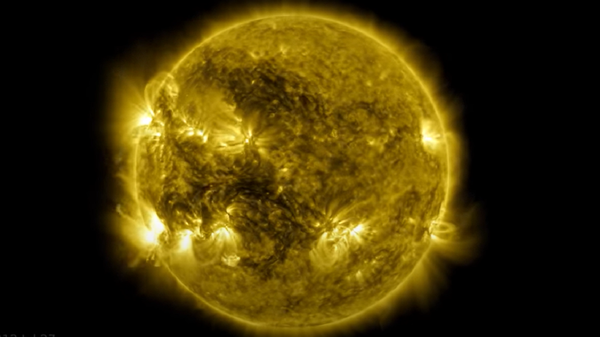In new research published Wednesday in the journal Nature, scientists revealed that they have detected neutrinos in the sun. Neutrinos can be traced to a carbon-nitrogen-oxygen fusion known as the CNO cycle, which is a process of stellar nucleosynthesis.
This is a process in which elements are created within stars through the combination of protons and neutrons. The findings confirm a theoretical prediction from the 1930s that the CNO cycle is the process most stars use to fuse hydrogen into helium.
“It’s really a breakthrough for solar and stellar physics,” said Gioacchino Ranucci of the Italian National Institute for Nuclear Physics (INFN), one of the researchers on the project, told NBC News.
Almost all stars, including the sun, release energy by fusing hydrogen into helium. In the sun’s case, 99% of the energy released comes from proton-proton fusion, which releases beryllium, lithium and boron, before they are broken down into helium.
The researchers used the Borexino detector at the INFN’s Gran Sasso particle physics laboratory in central Italy to confirm their findings.
The detector is the world’s most radio-pure liquid scintillator calorimeter. A scintillation counter is an instrument used to detect and measure ionizing radiation, while a calorimeter is an apparatus used to measure the amount of heat involved in a chemical reaction.
Although the Borexino detector has long been measuring neutrinos from the sun’s proton-proton chain reaction, detecting CNO neutrinos is a challenging process, with only seven neutrinos detected a day. However, the latest study confirmed that neutrinos are produced in the CNO cycle in the sun with a high statistical significance.
“This is the first evidence that the CNO cycle is at work in the sun and the stars,” Ranucci pointed out, NBC reported.
Gabriel Orebi Gann, a particle physicist at the University of California, Berkeley, also called the study’s findings "a major milestone."
“This discovery takes us a step closer to understanding the composition of the core of our sun, and the formation of heavy stars," Gann explained.
Researchers have also theorized that neutrinos from the Big Bang, the leading explanation for the formation of the universe that posits it began as a single point before expanding, could be used to explain the universe’s invisible “dark matter.” Dark matter refers to any substance that interacts through gravity with stars, planets and other visible matter. Dark matter is theorized to exist based on observed gravitational forces in the universe, but it does not interact with visible light or other electromagenetic radiation.

